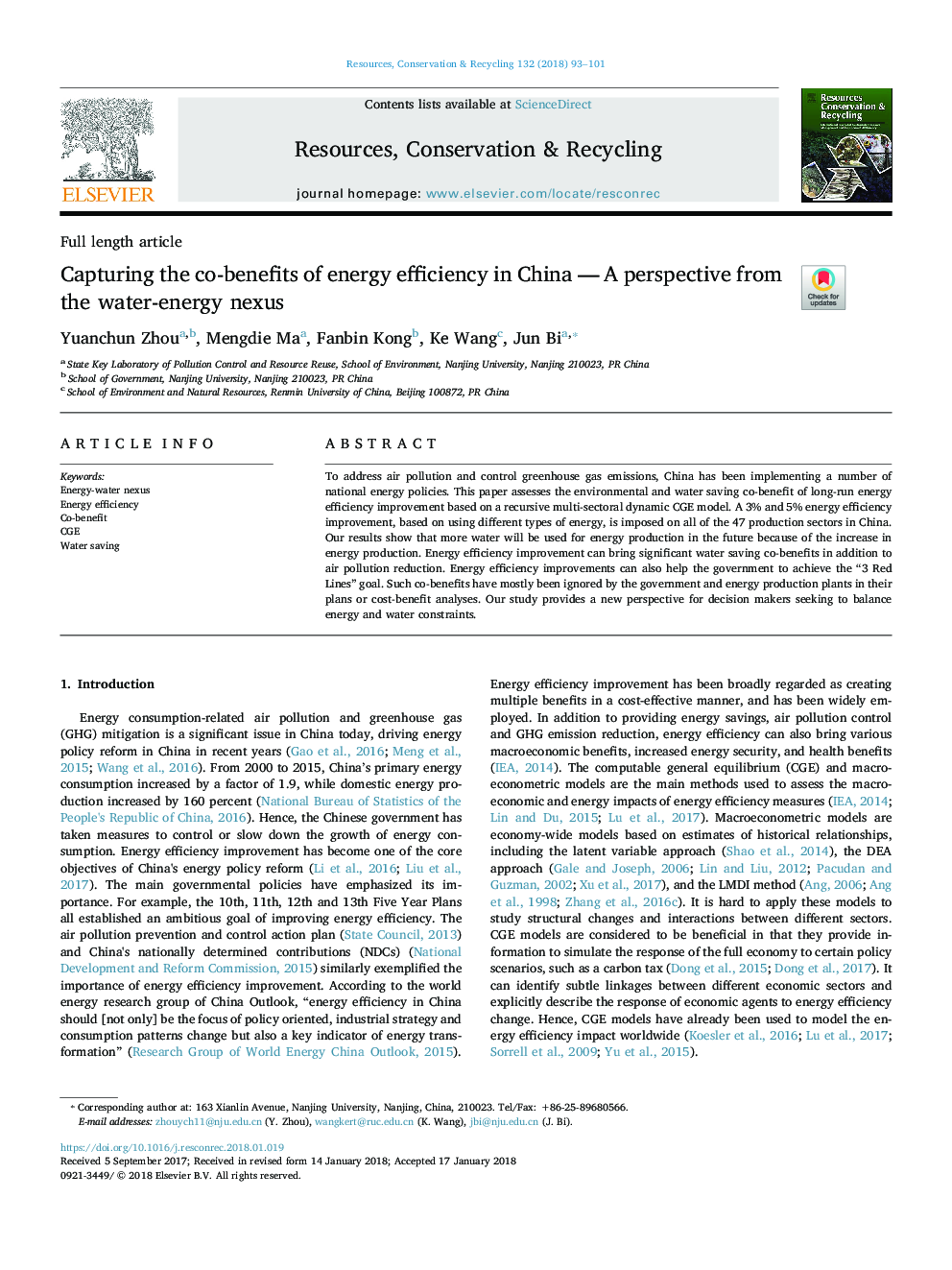| Article ID | Journal | Published Year | Pages | File Type |
|---|---|---|---|---|
| 7494301 | Resources, Conservation and Recycling | 2018 | 9 Pages |
Abstract
To address air pollution and control greenhouse gas emissions, China has been implementing a number of national energy policies. This paper assesses the environmental and water saving co-benefit of long-run energy efficiency improvement based on a recursive multi-sectoral dynamic CGE model. A 3% and 5% energy efficiency improvement, based on using different types of energy, is imposed on all of the 47 production sectors in China. Our results show that more water will be used for energy production in the future because of the increase in energy production. Energy efficiency improvement can bring significant water saving co-benefits in addition to air pollution reduction. Energy efficiency improvements can also help the government to achieve the “3 Red Lines” goal. Such co-benefits have mostly been ignored by the government and energy production plants in their plans or cost-benefit analyses. Our study provides a new perspective for decision makers seeking to balance energy and water constraints.
Related Topics
Physical Sciences and Engineering
Energy
Renewable Energy, Sustainability and the Environment
Authors
Yuanchun Zhou, Mengdie Ma, Fanbin Kong, Ke Wang, Jun Bi,
